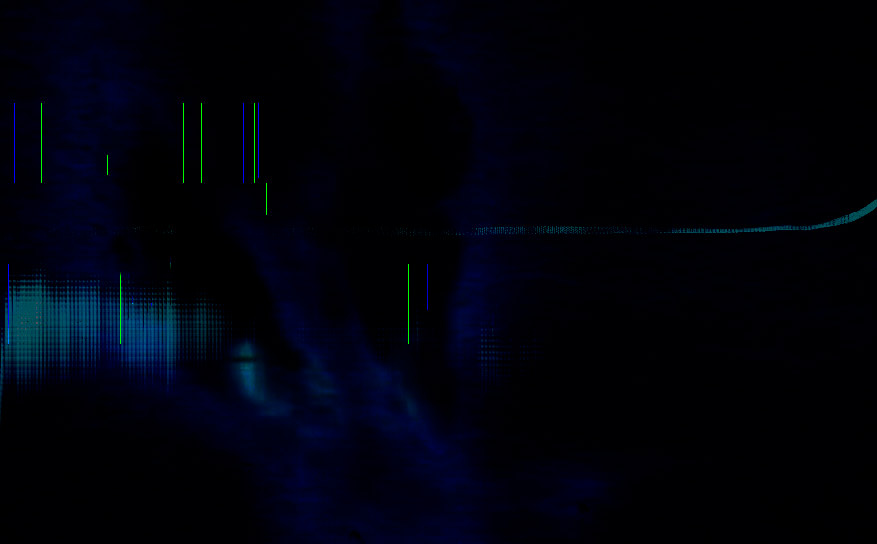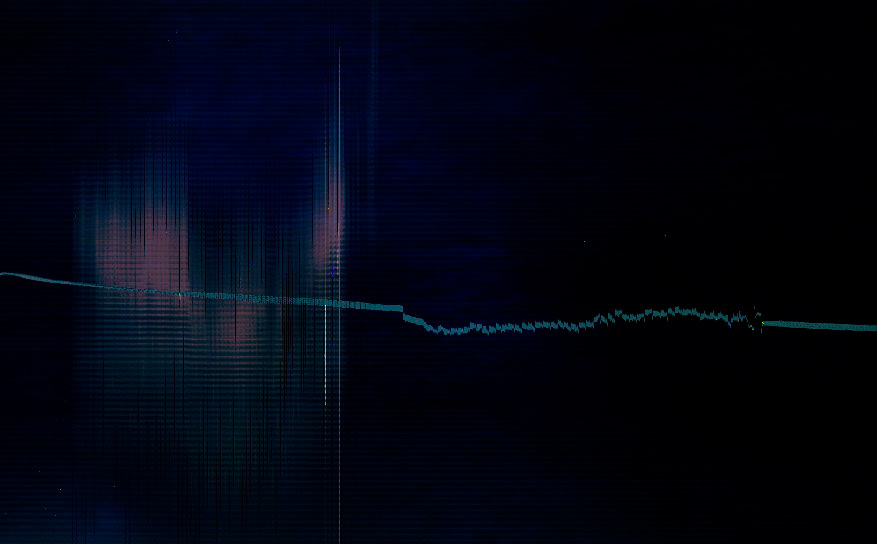The SPIN project is concerned with what lies beyond the fragments of infinity.
SPIN is a collection of experimental works in progress produced as artist in residence at the Laser Physics Centre at The Australian National University (ANU). This centre is using slow light (Zero Light) technology to research the possibilities of Quantum computing. The images presented include abstract light studies and video portraiture captured within the laboratory environment.
The idea for the SPIN project came from an earlier piece titled Newton’s Law, which I presented in the Zero Light exhibition at the School of Art Gallery at the ANU. In Newton’s Law I explored the notion of Zero Light technology used in Quantum Psychics by drawing with small LCD lights onto the Charge Coupling Device of a flat bed scanner.
Zero Light technology, the slowing down of the speed of light to trap information, will change the way reality is perceived. NASA is hoping to use the knowledge gained by Zero Light practice to produce warp drives that will assist in achieving a manned spacecraft reaching Mars. Theorists and philosophers that are engaged in this new technology are predicting supercomputers and time travel.
The SPIN project is in its infancy. The work presented in this exhibition is only five months old, and as such the visible world still plays a part in the construction of images. Lasers are the main source of energy used in the research centre and it is this aspect that I chose first to explore while becoming accustomed to quantum theories and how this new knowledge may influence my art practice.
To watch the beam of a laser appear as the mirrors and lenses of the unit are aligned is mesmerising, as compelling as watching a Black & White print appear in the developer tray.
I began with capturing profile still images of the laser beams as they travelled from one mirror to another, at the same time imaging the speckle patterns falling on the surrounding walls and scientific instruments. (Speckle pattern is a by-product of laser beam light. This pattern takes the irregular form of a grainy bright light mass that seems to float as the viewer changes position in relation to the fall of light.) Those images did not convey the physical spectacle and spiritual wanderings that I was experiencing while working with this unfamiliar light source. The great sense of movement and time that I was surrounded by in the laboratory had been lost in the rendering of still imagery. I decided to introduce digital video cameras to the project in an attempt to portray what was happening before me, around me as I was completely immersed in this strange light. The capturing of the light source as moving digital data has helped realise this experience on screen.
When capturing light as the subject with a camera it is hard to manoeuvre around the clichés that one is presented with from optical aberrations such as circles of confusion and lens flare. How I dealt with these clichés would determine the audiences reading of the work.
Moving the camera lens closer to the profile of the beam increased the occurrence of these light clichés. Minor movements of the camera in relation to the beam proved the best way to dissolve these optical configurations. With the right angle and composition I found all types of forms generated by the light source. Speckle patterns falling on instruments generated images that referenced landscape, whilst kinks in fibre optic cable replicated the biological.
Observing the laser, I became aware of the interference the beam must contend with from the surrounding environment. Floating dust particles in the atmosphere that bombard the beam create the visual sensation that the laser is constantly altering the direction of energy flow. This ebb and flow of light is fantastic to watch, the rhythm of light, the directional flow of the laser is at the complete mercy of air currents.
The technical limitations of the digital cameras I use to capture the laser light are a central influence on the imaging process. These devices translate light energy into digital information. The laser beam contains recordable and non-recordable energy that goes far beyond the capabilities of the cameras, information so extreme it doesn’t record. The differing energy levels are delivered to the camera lens in pulses at a speed that confuses the camera’s iris. The iris struggles to control the amount of energy the camera is receiving at a given time, causing extraordinary visual events. Depending on the amount of energy delivered to the camera it will either perform rapid adjustments to the iris or completely shut down. The majority of images presented in SPIN are results of this lack of capture ability, the camera technology pushed beyond the limits of visibility.
Exhausting the possibilities of image types I could capture from profile shooting the laser, I decided to place the camera in direct line of the beam. This new position of the camera allows the laser to work directly onto the Charged Couple Device (CCD) of the camera. The CCD is the point of translation of light energy into digital data. When the CCD receives too much light a reaction called “blooming” occurs. The excess energy received by a pixel on the CCD matrix flows over into it’s neighbouring pixels causing digital noise.
I estimated using the above method that the CCD would be destroyed after one exposure. This was not the case. Although burnt in small areas, neighbouring pixels, the CCD remains able to function. I attribute this to the pulse nature of the laser beam, and atmospheric disturbance that interacts with the path of light. Where the CCD has received maximum exposure the pixels are burnt and produce zero information / black. By repeated exposure it is possible to increase the number of pixels that capture zero information. Rather than using reflected light to create an image this method draws directly onto the CCD with the light source. This process of gradually burning the CCD exaggerates the pixel structure of the image and the inherent violence of the laser beam. It is this area of image construction that the SPIN project will further investigate.
As an artist that utilises the photographic medium to express ideas, I have been fascinated to observe how, by embracing the pixel and artefacts of digital technology, the visual world of my art practice may be further defined. Quantum Physics exploits the properties of light to render impressions, measurements and to gather information from the world invisible. The ultimate aim of the SPIN project is to express what is not, to capture the indiscernible which is lies beyond the limits of visibility.







Newton's Law 2005 - RGB light paintings







